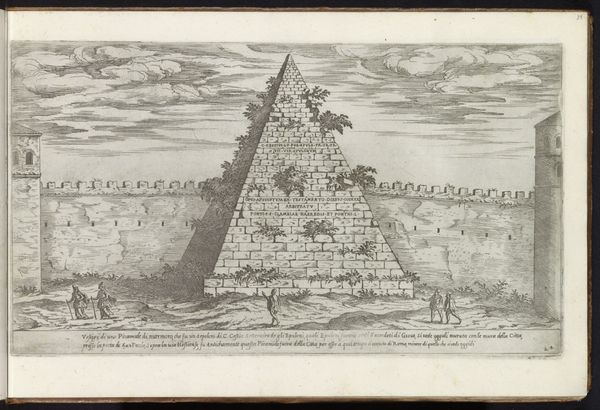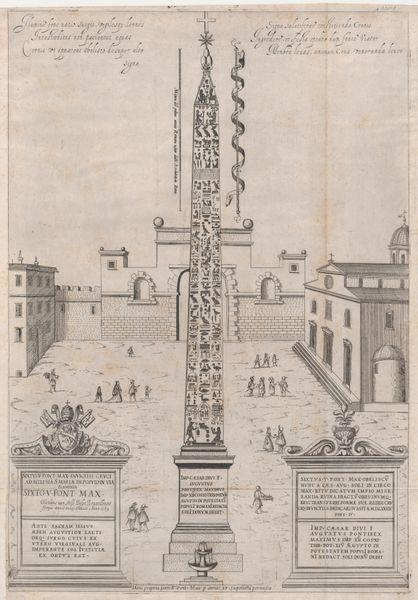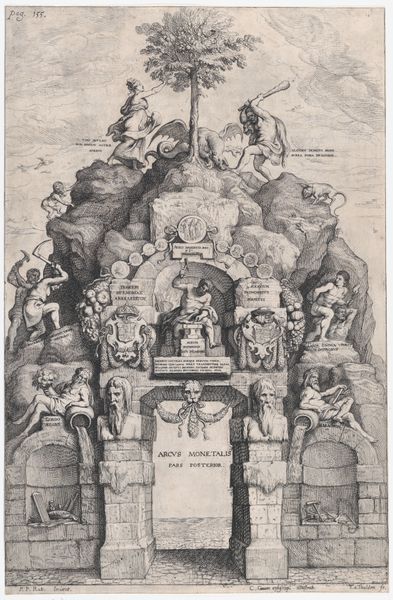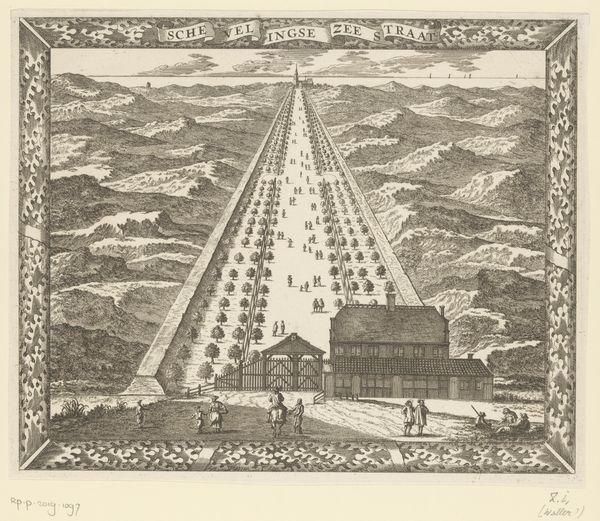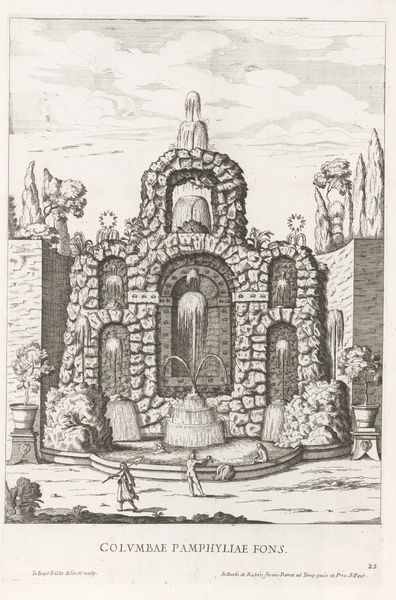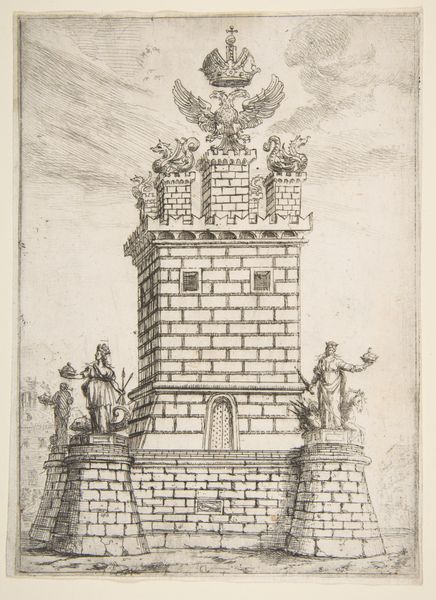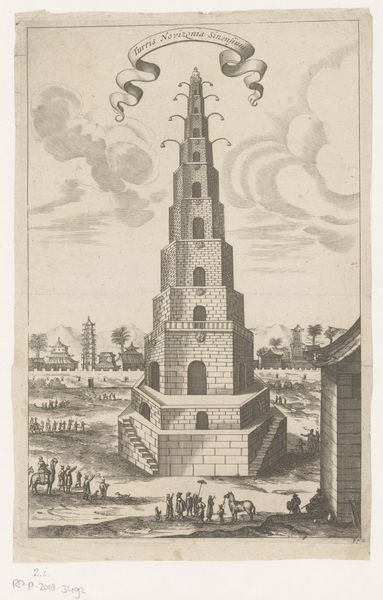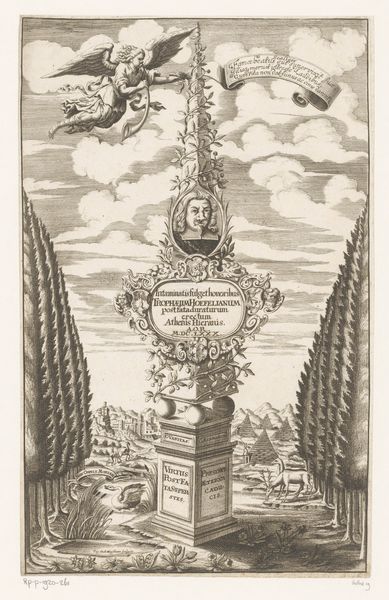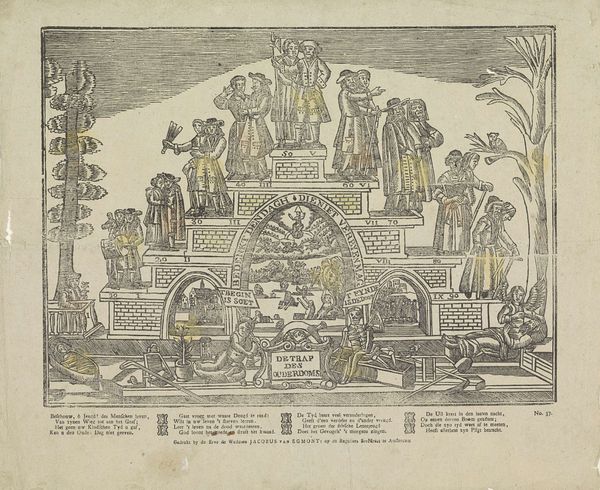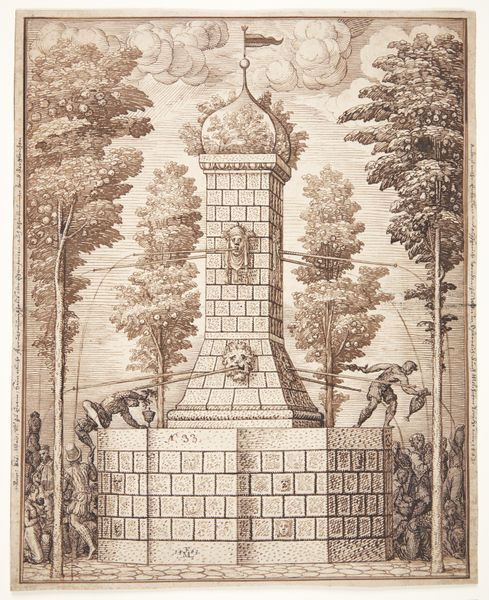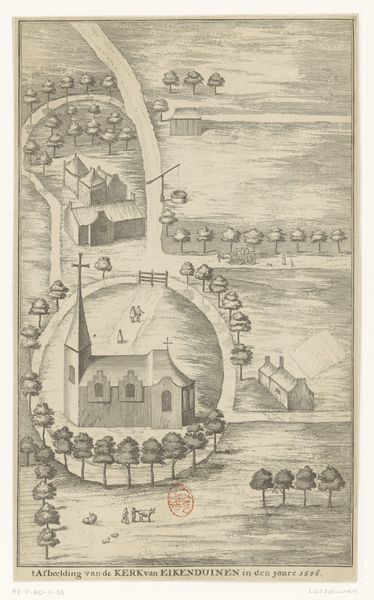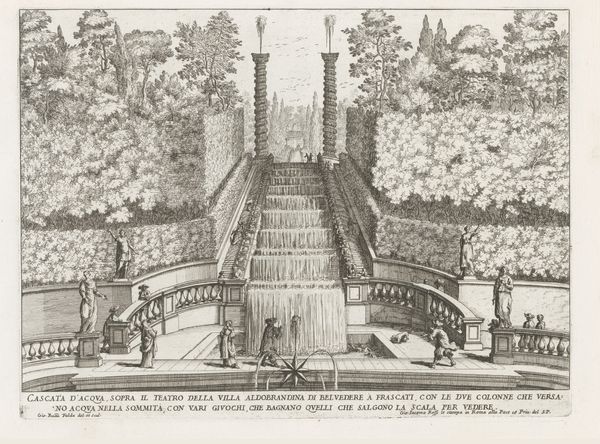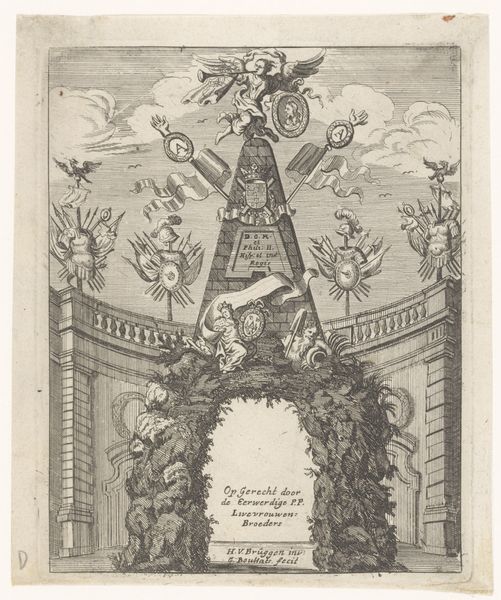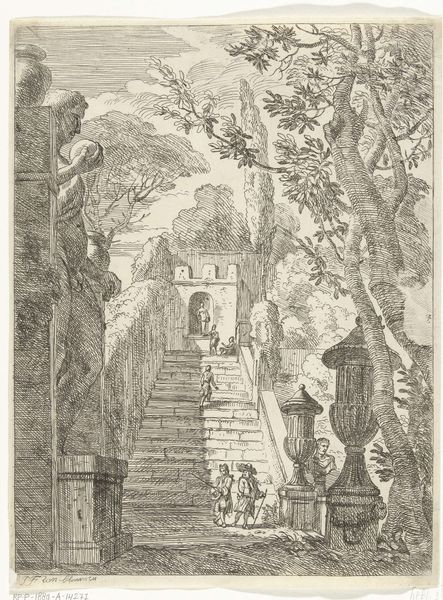
Speculum Romanae Magnificentiae: Pyramid of Caius Cestius 1547
0:00
0:00
drawing, print, paper, engraving, architecture
#
drawing
# print
#
landscape
#
paper
#
form
#
11_renaissance
#
geometric
#
line
#
history-painting
#
italian-renaissance
#
engraving
#
architecture
Dimensions: sheet: 15 1/4 x 11 in. (38.8 x 28 cm) mount: 19 1/16 x 13 3/4 in. (48.4 x 35 cm)
Copyright: Public Domain
This print of the Pyramid of Caius Cestius was made by an anonymous artist, as part of a series of prints called Speculum Romanae Magnificentiae, or Mirror of Roman Magnificence. Made in Rome, these prints circulated from the 16th century onwards, showcasing the city’s ancient monuments as newly rediscovered wonders. This pyramid, built around 18-12 BC, reflects the Roman fascination with Egyptian culture following their conquest of Egypt. It became a popular subject for artists, a testament to Rome's imperial reach and its absorption of foreign cultures. The inscriptions you see on the pyramid identify it as the tomb of Caius Cestius, a wealthy Roman magistrate. But the state of disrepair in the image points to the passage of time and the transience of human achievement. Understanding this image involves considering the role of antiquarianism in shaping European identity and the ways in which ancient monuments were repurposed as symbols of power and cultural continuity. Art historians rely on archaeological reports, historical documents, and comparative analyses to interpret the layered meanings embedded within such images.
Comments
No comments
Be the first to comment and join the conversation on the ultimate creative platform.
